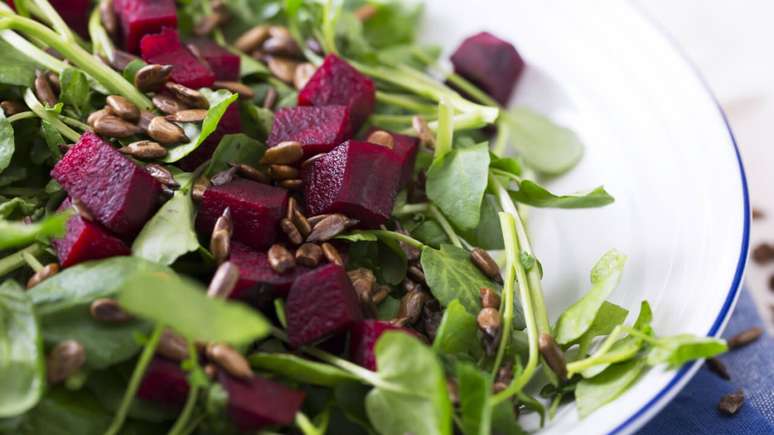The new study indicates the advantage of betting on greater vegetable diversity, in particular protein sources; Look at how to escape food monotony
In addition to bringing new sensory experiences, increasing the number of plant options in everyday life can help reduce the risk of diabetes Type 2, according to a study published in June in scientific diary International Journal of Epidemiology.
The disease, characterized by the compromised function of insulin and high levels of blood sugar, is behind cardiovascular, renal and eye damage. According to the International Diabetes Federation, there are 589 million adults with diabetes all over the world. In Brazil there are more than 16 million.
Establish the relationship between greater diversity in menu and the prevention of disorders, researchers of universities in Canada, Germany, Italy, Spain, among other countries, have evaluated the data from great research, Epic-interract, With information of 23,649 people, accompanied for almost 10 years.
They discovered that the daily consumption of four to five vegetables – alternates between fruittubers, leaves and other vegetables, as well as the ingestion of different sources of vegetable proteins, such as legumes (beanspea, chickpeas, soy, etc.), walnuts and semi-sidelines associated with a reduced incidence of type 2 diabetes.
Although the same scientists indicate the limits, such as the analyzes based on questionnaires that responded by the participants themselves, there is evidence, revealed in other research, that increasing the supply of vegetables and reducing the consumption of animal food is good for health.
One of the explanations is the presence of fiber, which help to balance blood sugar. “The menus that favor vegetables tend to have a less saturated fat, a nourishing that can encourage insulin resistance,” says endocrinologist Claudia Schimidt of the Einstein Israelita hospital. The doctor refers to a misunderstanding in glucose metabolism which increases the risk of diabetes.
For the nutritionist Maristela Strufaldi, of the Brazilian diabetes society, the study helps to strengthen the importance of the entire context in the prevention of diseases. “There is no miraculous food, but healthy choices that lead to a balanced food model,” he says.
Food monotony
Nowadays, thanks to the global phenomenon of food standardization, with a large space for industrialized, it is common that the menus almost always present the same ingredients, in a real food monotony.
Hence the recommendation, strengthened by the study, to expand objects in everyday life. “The more the colorful dish, the better,” says Schimidt. The variety helps to guarantee more vitamins, minerals and others nutrients Antioxidant and anti-inflammatory action that contributes to the functioning of the body.
The nutritionist attracts attention to the wealth of our country. “We have a great biodiversity,” says Strufaldi. There are many options for fruit, vegetables, nuts, among other native foods that offer protective compounds. It is worth trying to acquire them from small local producers, an attitude that collaborates with the environmentPrecisely because food does not need to travel many kilometers to reach the table, reducing carbon emission and other pollutants.
Another advice is to bet on seasonality, that is, to give priority to the vegetables of the time. Seasonal products are fresher and tastes and are often grown with fewer pesticides and fertilizers. Not to mention the fact that they have a lower cost.
According to the expert of the Brazilian diabetes company, one of the strategies that contributes to guaranteeing a varied diet and planning. “Everything starts with the shopping list,” he says. The ideal is to get out of identity, change lettuce for another vegetables, for example. There are a plethora of options to increase salads, including beans and other legumes highlighted in the study.
Speaking of beans, although the combination with rice is perfect, it is worth passing the types, from black to red, passing through carioca or rose. “The lentil is also excellent with rice,” suggests the nutritionist. Look for new ways of preparing, alternating the ingredients and using herbs and spices to season that the dishes are essential tricks.
And it does not cost to strengthen: the balanced diet is one of the pillars to reduce the risk of diabetes, but the practice of physical activity He must also enter the routine. The exercises help to balance insulin levels and promote weight loss. “The recommendation is to exercise 150 minutes a week,” says Einstein Doctor, who suggests practicing what is most suitable for the daily life of the other. “You should choose the activity of your choice,” he says.
Source: Terra
Ben Stock is a lifestyle journalist and author at Gossipify. He writes about topics such as health, wellness, travel, food and home decor. He provides practical advice and inspiration to improve well-being, keeps readers up to date with latest lifestyle news and trends, known for his engaging writing style, in-depth analysis and unique perspectives.









